A History of Cabin Time
A group of Midwestern artists gets snowed in Up North. They build fires, take hikes, share meals, make art -- and document everything. And a scrappy, nomadic, thoroughly 21st-century artist residency is born.
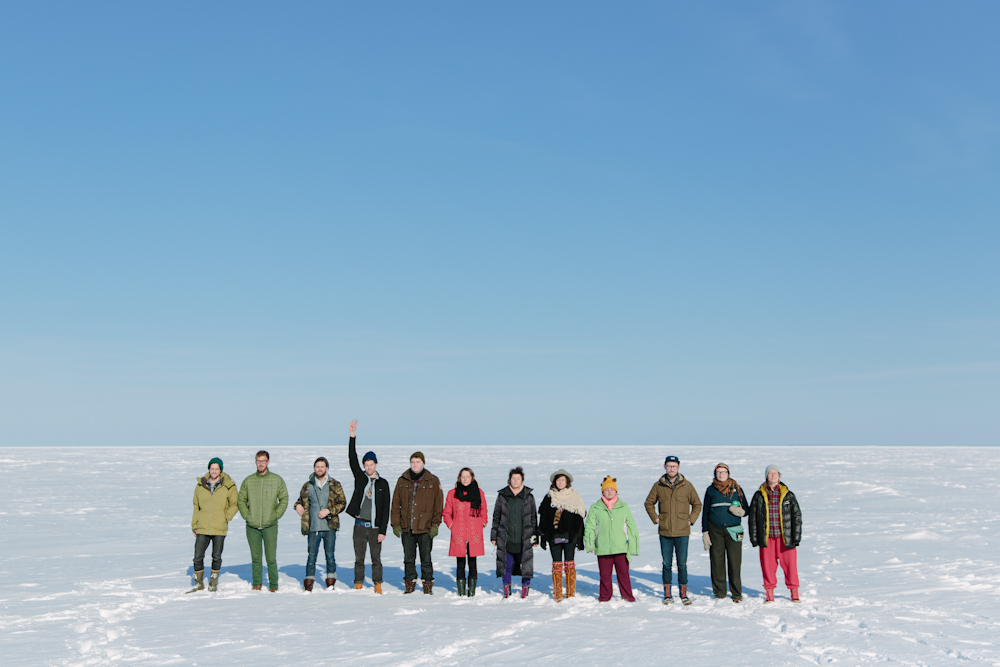
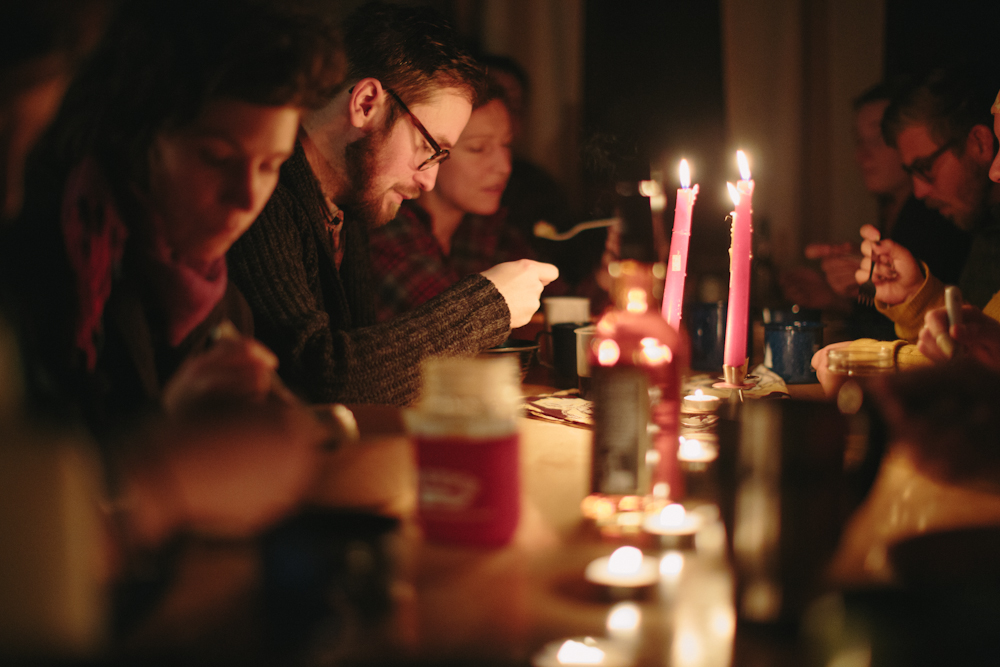
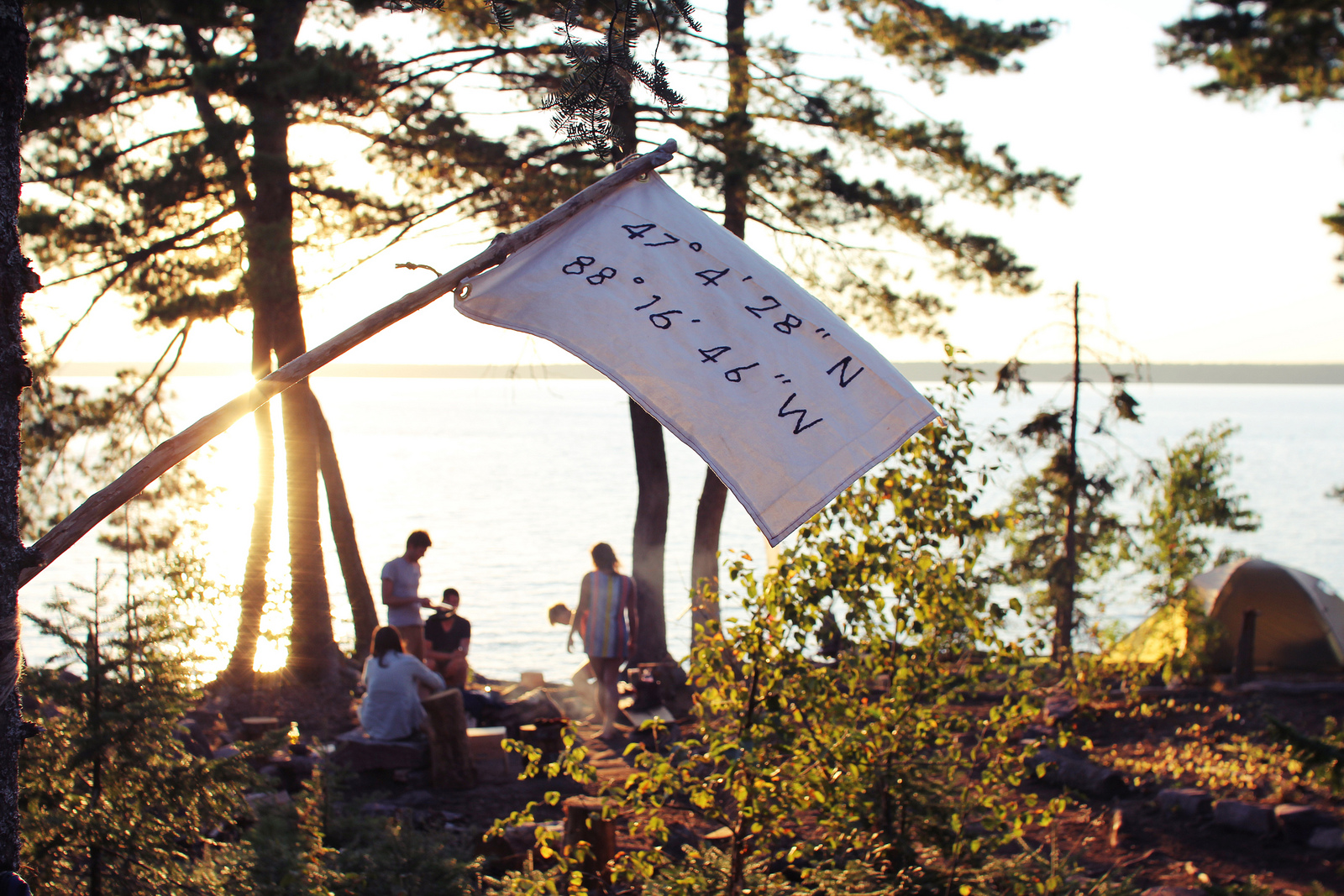
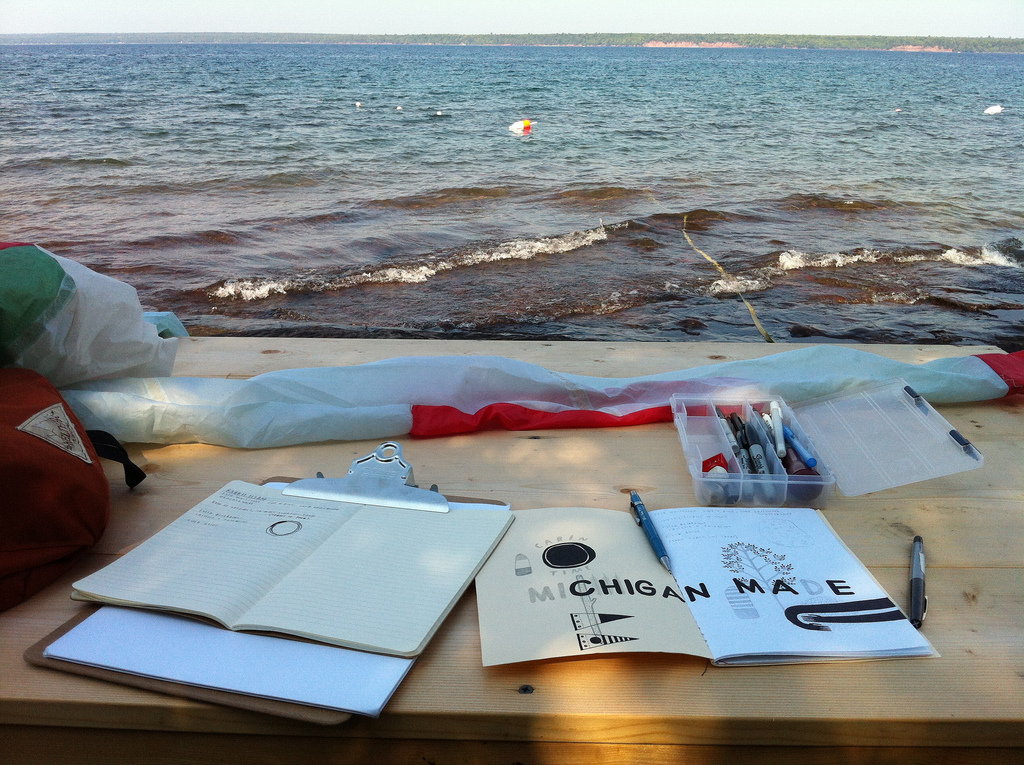
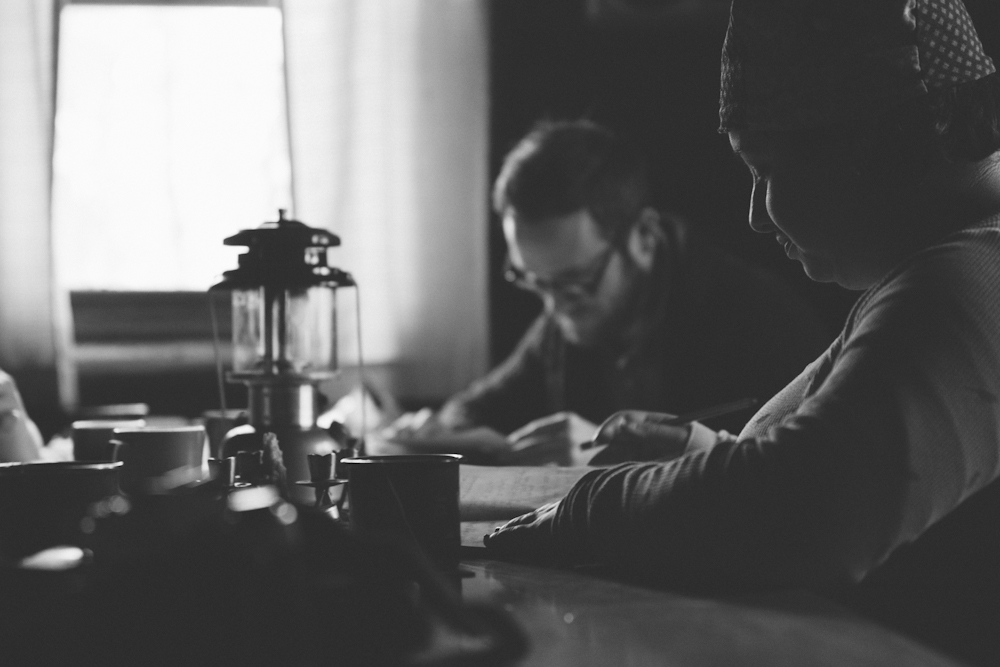
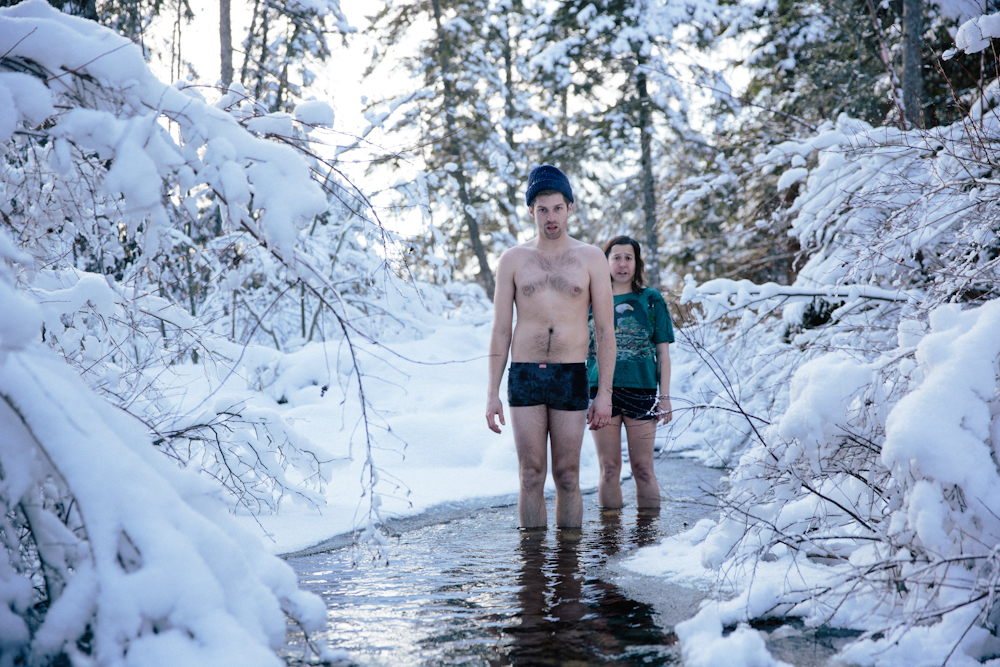
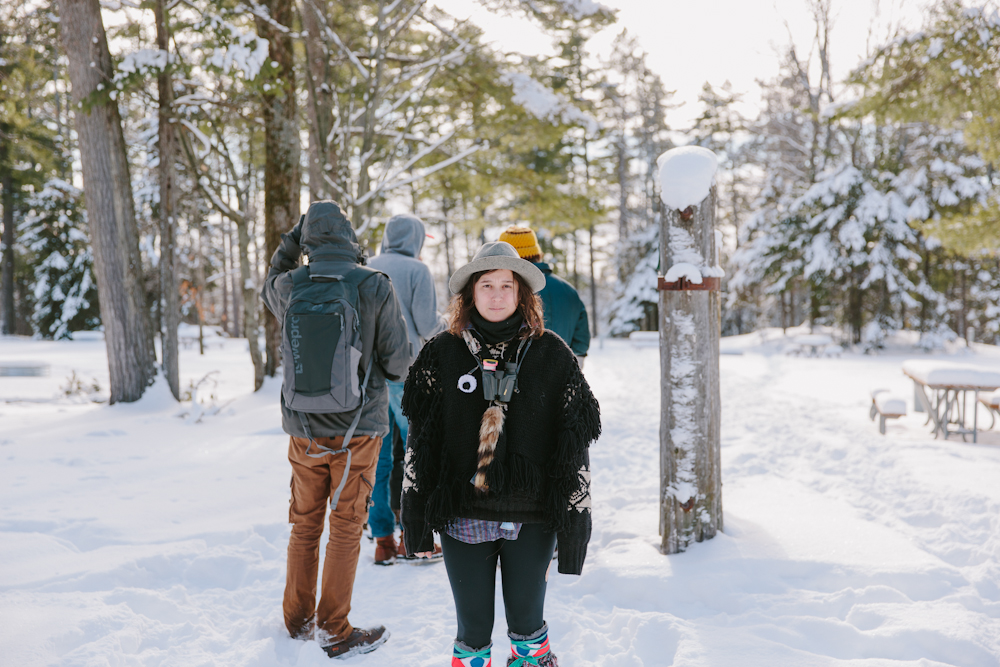
IN DECEMBER OF 2011, Geoffrey Holstad, an illustrator and designer based in Grand Rapids, Michigan, took a trip Up North with a few friends. They rented a rustic cabin in the Porcupine Mountains, deep in Michigan’s Upper Peninsula, with a plan to hike and enjoy the outdoors. They expected snow, but the blizzard they were met with was so extreme they spent the entire trip snowed in. Holstad and one of his friends, a photographer and designer named Ryan Greaves, passed the days working on an elaborate collaborative drawing in the cabin’s guest log book. Although the trip turned out to be much more sedentary than planned, Holstad says their unexpected isolation made him realize the value of a temporary escape, a place where the creative and social pursuits of artists can share center stage without any of the distractions of home.
A few weeks later, Holstad and Greaves returned to that cabin in the Porcupine Mountains with five more artists and creatives in tow. They built fires, took hikes, shared meals, made art — and documented everything. And thus, Cabin Time — a scrappy, nomadic, thoroughly 21st century artist residency — was born.
Their time spent in the woods yielded an exhibition at a gallery in Grand Rapids, a limited-edition catalog of sorts referred to as a “field guide,” and a short video documenting the project which they posted online. The exhibition and field guide were well received in Grand Rapids, but the video had a considerably larger reach. When I spoke to Holstad recently, he said, “We didn’t really plan on anyone seeing it outside of our friends on Facebook. It started to go crazy. I would get 20-30 people emailing me per day asking, ‘What is this project? How long has it been around? What are you doing next?’ We just went camping, but we were intentional about documenting it.”
One day, after the first video was released online, they got an email offering them use of a small, private cabin in northern Minnesota. They jumped at the opportunity and quickly put out a call for artists. A few months later, 18 artists from several states converged on the wooded property for a week of creation and camaraderie. Later that same summer, a third Cabin Time retreat, a smaller group this time, ventured to Rabbit Island. At the time they visited, that pristine wooded island in Lake Superior was beginning the process of becoming home to its own artist residency, with the help of a Kickstarter campaign and other support.
Cabin Time has done five such artist residencies to date, the most recent was in Green River, Utah — a break from the Great Lakes settings of the other four, in part, due to Holstad’s recent relocation from Michigan to Southern California for a job as a graphic designer at Patagonia. The Cabin Time residencies launched with a speed and tenacity rare for a passion project like this. In just over a year and a half, the idea went from idle conversation to realization: five residencies, four exhibitions, five field guides, five short documentaries, and a web presence quickly gaining global attention. The first three iterations of the residency happened in just eight months, after which the breakneck pace finally slowed slightly.
Cabin Time’s immediate success is due in large part to the viral quality of the material they put online. This creates a tension. Is the project about the creative, social, and sensory lived experience of a temporary community in the wilderness, or is it about recording and projecting an image of that experience to others?
“The project is about being there,” Holstad says. “You don’t have cell reception [when you’re in such remote locations], so we have these constant decisions when we go back into town: Do you post this on Instagram or don’t you? We just leave it up to the artists. We say, ‘Do your thing, let it be what it is.’ But these are all things we’re always talking about, and trying to be intentional about.”
Artists documenting their process and travelers making a record of their adventures — neither pastime is new. But something more is happening with Cabin Time. They are masters at crafting artist/adventurer personae in multiple media. The short films of Carson Davis Brown, which have documented the most recent residencies, are especially effective in this regard. Brown was recently named Moving Images Photographer of the Year at the International Photography Awards presented by the Lucie Foundation, for his film documenting the fourth residency, CabinTime: Wilderness. Cabin Time’s website, which is also a Tumblr blog, has just the right feel. The field guides are meticulously designed by Holstad and Greaves and printed by Issue Press, a small Grand Rapids-based zine publisher that specializes in multi-color process Risograph prints.The overall effect is a seamless blend of documentation, smart design sensibility, and pitch perfect branding.
It’s worth noting that most Cabin Time artists are young and middle class — they’re “digital natives.” But this is much more than techno-narcissism. Artists, after all, have always used technology of the day to translate ideas and experiences into form. The narrative of the artist in sublime communion with nature, in particular, has always been filtered through technology, whether it’s by way of the portable paints and easels of plein air painting, photography, or Instagram. Even a book like Henry David Thoreau’s Walden is entirely dependent on the technology of the printed book. To say Thoreau went into the woods and had a transcendent experience is only telling half the story. It’s more accurate to say he went into the woods, had a transcendent experience, then wrote a book about it. It’s easy to cast a judgmental eye on young people for diving headfirst into new technology. It’s also easy to forget that every cultural artifact we have is the result of a technology that at one point was a newfangled thing.
_____________________________________________________
Saying Thoreau went into the woods and had a transcendent experience is only telling half the story. He went into the woods, had a transcendent experience and then wrote a book about it. He filtered his experience through the dominant technology of his day.It’s easy to cast a judgmental eye on young people for supposed “techno-narcissism.” It’s also easy to forget that every cultural artifact we have is the result of artists using technology that was once, itself, a newfangled thing.
_____________________________________________________
Net artists Brad Troemel, Artie Vierkant, and Ben Vickers collaboratively composed an essay, ”Club Kids: The Social Life of Artists on Facebook,” that does a good job mapping implications of the always-on, self-broadcasting ethos of social media and its effect on artist practice. “The need to socially orient oneself has now been reversed from its normal position: today’s artist on the internet needs an audience to create art, as opposed to the traditional recipe that you need to create art to have an audience. Posting work to the internet with no social network readily in place is synonymous with the riddle ‘If a tree falls in a forest and no one is around to hear it, does it make a sound?’ For young artists on the internet the answer to the forest question is ‘no’.”
When I saw the first Cabin Time exhibition, an odd thought occurred to me. What if the primary audience for Cabin Time is not made of gallery visitors, zine collectors, or video watchers? What if the primary audience is the artists themselves? I’ve liked the work at each exhibition, but I’m always overcome by a sense of longing when I take it all in, wishing I had been with them on the trip. The artifacts may be wonderful, but they speak to an experience that the artists had, which you, the viewer, did not share.
When I spoke to Holstad, he emphasized the importance of the experience itself. “The reason, at the end of the day, that I still do this project comes down to relationships. It’s all the amazing and inspiring people that I meet [through Cabin Time]. I meet people like Mary [Rothlisberger], life-changing people.”
While the work of the designers, filmmakers, and photographers that make up Cabin Time’s regular cohort translates seamlessly to easily transferrable forms online, Mary Rothlisberger‘s social, site-specific practice is harder to distill. Rothlisberger is something of a serial participant in artist residencies, and through them she’s carved out a nomadic life. She wanders between opportunities, building on a career focused on installation and relational projects. She participated in the second Cabin Time, and has since been a central figure in the group’s residencies. She has an uncanny ability to model buzzwordy practices, like relational aesthetics and social practice, in such a way that they become warm and welcoming; what’s more, she easily forms collaborations with artists and creatives who don’t normally frame their work in those terms. In the most unpretentious way possible, the collision of Rothlisberger’s career with Cabin Time gives the project’s social element a critical significance it might not otherwise have.
The artist/adventurer persona articulated by the Cabin Time founders and participants calls to mind something Laurie Anderson said in the introduction to a 1987 episode of the experimental PBS series, Alive from Off Center. As a way of introducing a curated selection of short films she muses, “Tourists take pictures to prove they were there. Filmmakers make movies because they were never there.” She draws a distinction between using film to document one’s experience, and using film to elicit an experience in someone else.
Of course, now there is no longer a difference between tourists and filmmakers. We’re all tourists, we’re all filmmakers. We’re all artists, we’re all audiences. We’re all designers of ourselves, and we’re all consumers of the designs of others. With the line between artist and viewer dissolved, the questions remaining are more nuanced: What does a good artist look like? What makes a good viewer?
The ability to create a longing for authentic experience mixed with a hip outdoorsy aesthetic is a powerful thing. It’s a marketing campaign whose only agenda is self-preservation. And Cabin Time’s marketing acumen hasn’t gone unnoticed. “We were offered a blank check from Urban Outfitters about a month ago,” Holstad admits. “We turned it down. They said, ‘We will pay for all of Cabin Time going forward, pretty much anywhere you want to go, we’ll make it work.’ But that was a really important milestone in the project — to say: Hey, if we’re going to turn down this stupid amount of money that would let us go where ever we want — and obviously with Urban Outfitters, there was no chance anybody wanted to do that– we had to make a lot of tough decisions and have these conversations.”
The pitch from Urban Outfitters even included an offer to help them become a sustainable non-profit organization. It was a tantalizing offer, in that such status would enable them to offer substantial support for artists to travel and participate in the residency. As it stands, artists pay $200 and make their own way to the remote location. The fee barely covers Cabin Time’s costs. The field guides are printed at a loss. The documentation provided by Carson Davis Brown and other photographers, a valuable asset for artists’ promotional efforts, is a labor of love. For the time being, Holstad and the core group of artists have decided to maintain the project as a break-even side gig. If they’ve made it work alongside their day jobs up to this point, they reason, why pour administrative work into grant writing or align the project with a commercial brand if it’s not strictly necessary?
Even if Cabin Time’s interests are not commercial, they are building a very effective brand. This is in part because Holstad, Greaves, Brown, and other participants do commercial design work to earn a living. Michael Beirut, legendary graphic designer at Pentagram, once said, “Clients are the difference between design and art.” The difference between what goes on at Cabin Time and a project where artists and designers document their adventures at the behest of Urban Outfitters may be conceptually significant, but it’s nearly invisible on the surface.
If documentation, packaging, and digital distribution of artistic identity were once an optional strategy, it’s quickly becoming a necessity for artists’ survival. In the 2010 documentary The Future of Art, critic and theorist Boris Groys puts it in stark terms:
“Professional art consists only in representing oneself. In other words, an artist is someone who does nothing more than cultivate his own image. Which basically means that the professional artist is no longer specialized in the production of whatever artworks — that’s long gone. Rather, what he makes in the end is his own image. And that includes not only what he made, but also how he is perceived by the press, by the media, by society as a whole. And the good artists are the ones who can control that.”
Good artists succeed in turning authentic experiences into an appealing brand. Marketers, on the other hand, seek to turn a brand into an authentic experience. As the two continue to incorporate each others’ strategies, the difference between them rests only in their respective motivations – the “why” of the work. Cabin Time’s principals have decided that taking time to create while communing with nature and one another is sufficient motivation to keep the work going. The project doesn’t need to be part of a larger commercial strategy, and they don’t need it to make money.
Reflecting on conversations that resulted from the Urban Outfitters offer, Holstad put it this way, “People like Urban Outfitters aren’t even being subtle about it. They’re trying to buy our project because what we have in Cabin Time is real, and the thing that they have is not.”
_____________________________________________________
About the author: Kevin Buist has exhibited artwork in solo and group exhibitions in New York City and Grand Rapids, and has been featured in numerous print and online publications including the Art:21 blog, where he was a blogger-in-residence, as well as Solace Magazine, Art Hack, and SpoutBlog. At ArtPrize, Buist oversees exhibitions and cultural programming, and he also directs the ArtPrize juried awards, including selection of jurors. He programs a world-class speaker series that coincides with the event, that has included lively and provocative lectures by John Waters, Jerry Saltz, and Theaster Gates, among others.